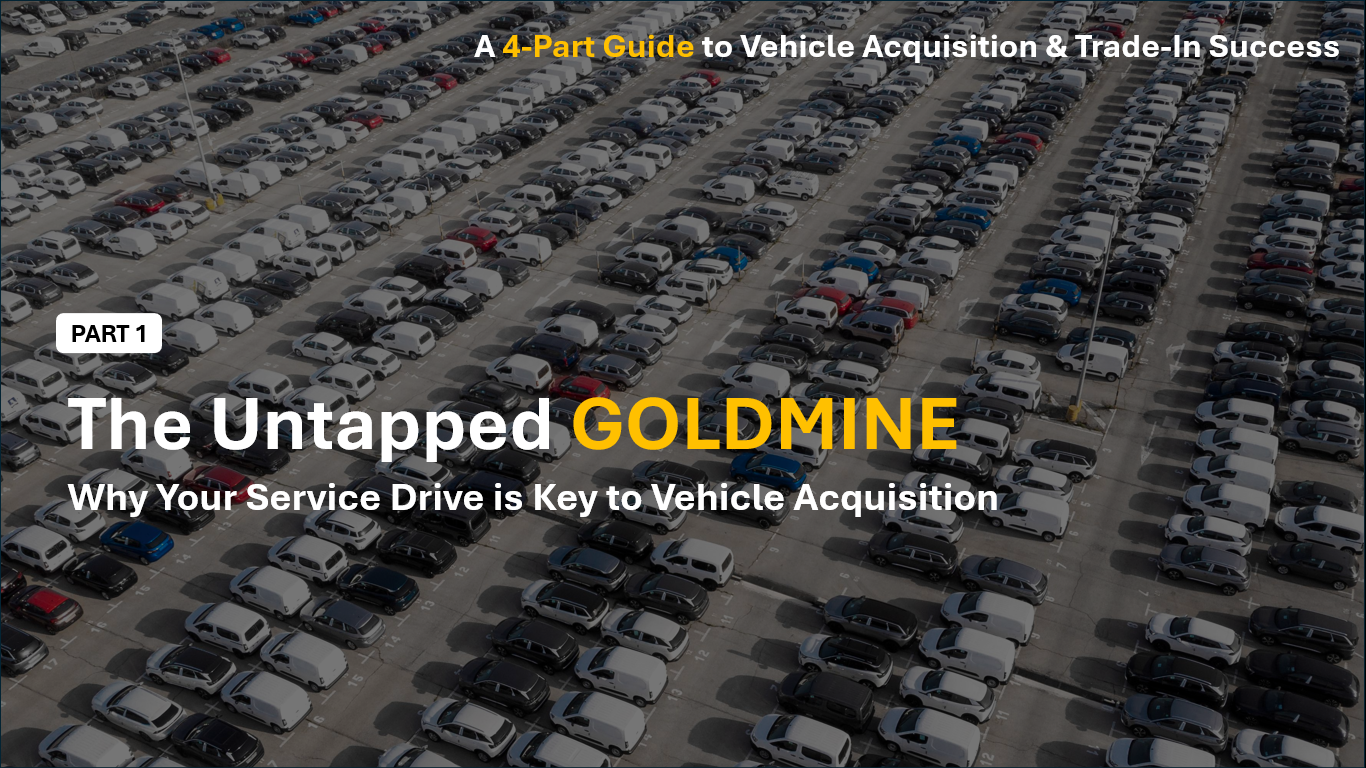
Welcome, sales professionals, to the first installment of our four-part series designed to help you unearth a consistent stream of high-quality vehicles right from within your dealership’s own walls. Too often, the service drive is seen merely as a hub for repairs and maintenance. But look closer – it’s a goldmine, teeming with opportunities for vehicle acquisitions and trade-ins that can significantly boost your inventory and profitability.
In today’s competitive automotive market, sourcing desirable pre-owned inventory is more challenging and crucial than ever. Auction lanes are crowded, wholesale prices can be unpredictable, and new vehicle affordability is a growing concern for many customers. This is where your service drive shines.
Think about it:
Focusing on service drive acquisitions isn’t just a tactic; it’s a strategic imperative that can build a more resilient and profitable used car department. It also fosters a more integrated dealership culture, encouraging collaboration between sales and service teams who can work together to identify these prime opportunities.
To effectively engage a service customer, you need to understand their mindset. They’re at your dealership with a primary goal: to get their current vehicle serviced or repaired. A new car purchase is likely not top-of-mind. This means your approach needs to be subtle, respectful, and value-driven.
However, several “trigger points” can make a service customer surprisingly receptive to discussing a trade-in or selling their vehicle:
The service visit itself often crystallizes a customer’s feelings about their current vehicle’s condition and future. This is your window. It’s not about a hard sell; it’s about being a consultant who can offer a solution or a beneficial alternative to a potentially expensive repair.
Engaging service customers effectively is an art form. Pressure tactics will almost certainly backfire. Your goal is to build rapport and position yourself as a helpful resource.
Consider these conversation starters:
The “soft appraisal” or “equity check” is a fantastic, low-pressure tool. Frame it as a complimentary service. If possible, have these conversations in a comfortable, semi-private area away from the service desk bustle.
Collaboration with service advisors is absolutely key. They are your frontline allies. Encourage them to:
Your role is that of a vehicle lifecycle advisor. Sometimes, the best advice might be to proceed with a repair. Other times, you can present a compelling case for trading up to avoid future costs and gain desired features. This consultative approach builds immense trust. Even if a transaction doesn’t happen that day, a positive, no-pressure interaction makes it far more likely that customer will return to your dealership for their next purchase.
Before we even get to sophisticated AI tools (which we’ll cover in Part 2), your dealership is likely sitting on a treasure trove of data within your existing Dealer Management System (DMS) and Customer Relationship Management (CRM) platforms. This data is the bedrock of any smart acquisition strategy.
Think about the insights locked away in:
Many dealerships are “data rich but insight poor.” The first step to modernizing your service drive strategy is to recognize, organize, and begin to analyze this existing data. Ensure good data hygiene – clean records, accurate contact info, and consistent data entry. Even simple reports from your DMS/CRM (e.g., “service customers this week with vehicles over 6 years old and 80,000 miles”) can provide actionable lists for your team.
This foundational data work not only boosts your traditional efforts today but is absolutely essential for the success of any AI-driven strategies you implement tomorrow. Clean, well-organized data is the fuel for effective AI.
Stay tuned for Part 2: Tech-Powered Prospecting, where we’ll explore how to leverage this data with modern tools and AI to supercharge your service lane acquisition efforts!
